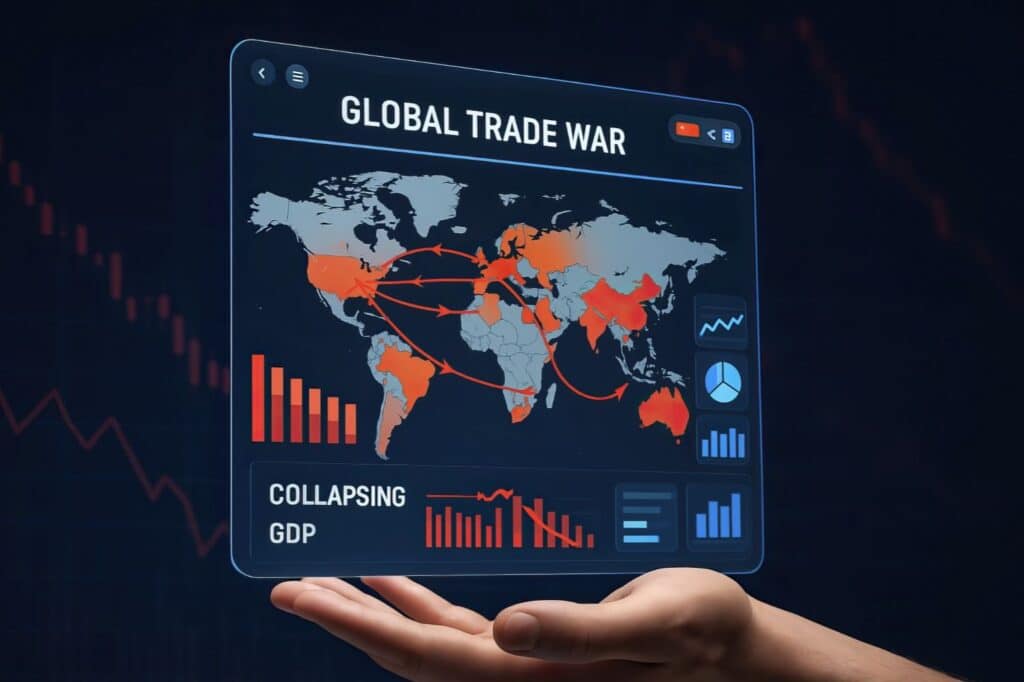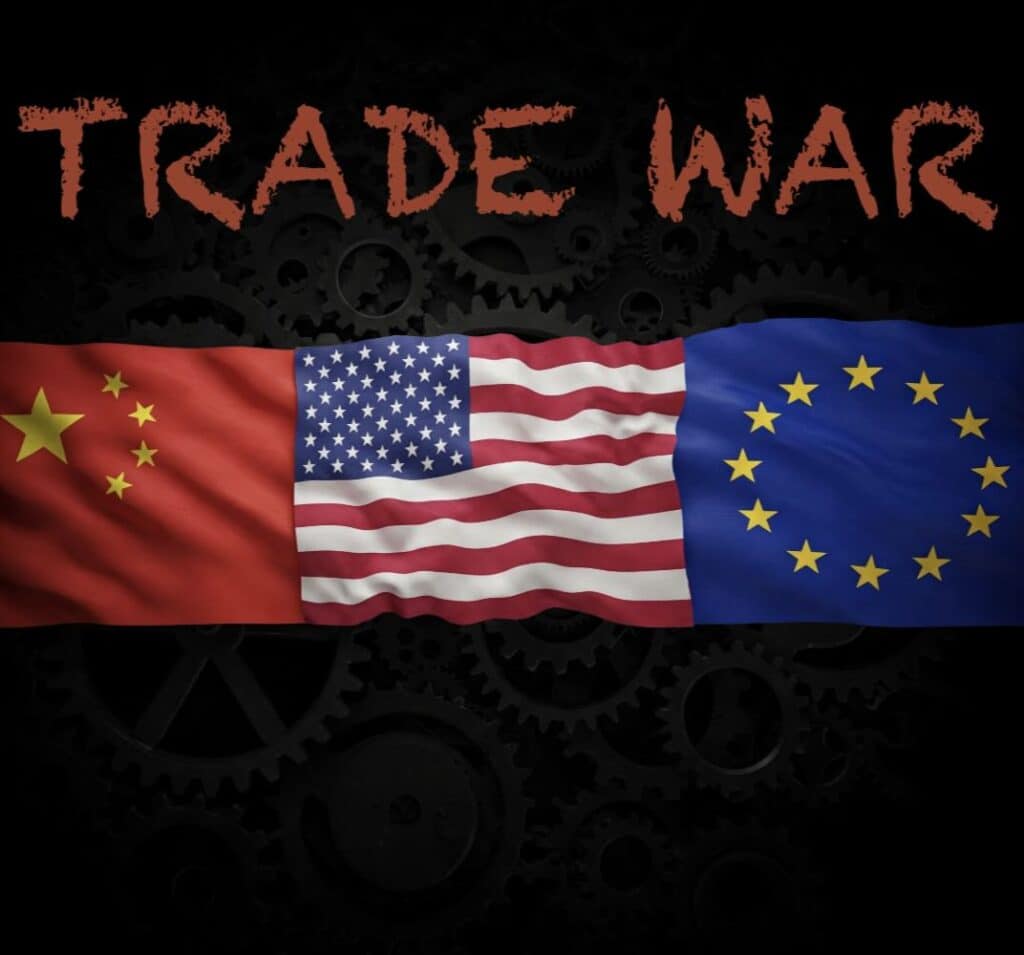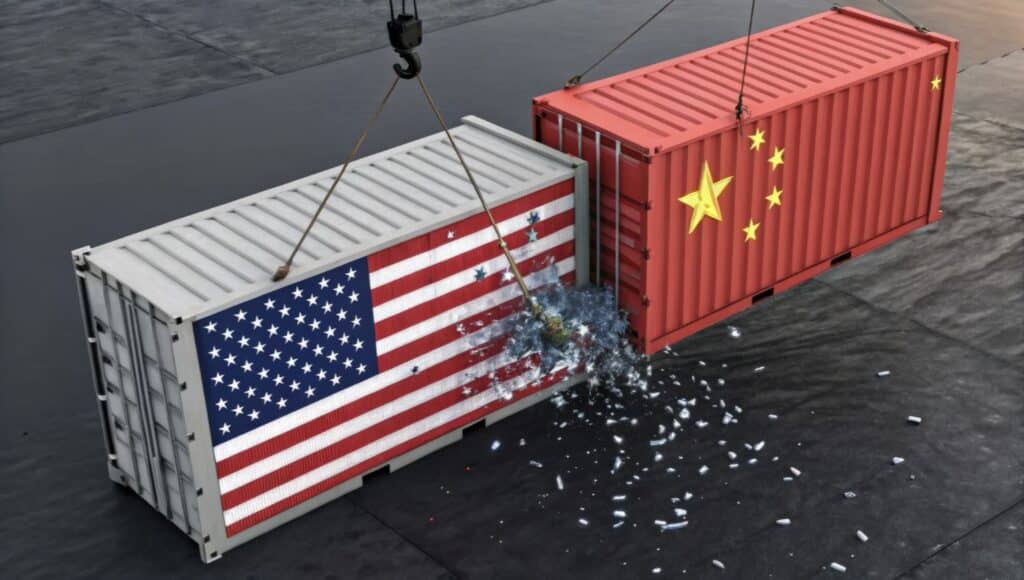Global trade is an intricate web of interconnected economies, supply chains, and manufacturing processes. In this complex system, tariffs are often touted as a solution to protect domestic industries and address trade imbalances. However, the reality is far more nuanced.
Tariffs often fail to achieve their intended outcomes, instead creating a cascade of adverse effects that harm businesses, consumers, and the economy as a whole. Read on as we will explore why tariffs are not the answer to global trade challenges, dispelling common misconceptions about who pays for tariffs, exploring their impact on manufacturing costs, and highlighting the complexities of global trade and manufacturing.
Table of Contents
- What Are Tariffs and How Do They Work?
- How Tariffs Disrupt Supply Chains
- The Global Perspective: Why Tariffs Are a Lose-Lose Strategy
- A Better Way Forward: Alternatives to Tariffs
- Related Questions
What Are Tariffs and How Do They Work?

Tariffs are essentially taxes imposed by a government on imported goods and services. Their primary purpose is to make foreign products more expensive, thereby encouraging consumers to buy domestically produced goods.
While this may sound like a straightforward strategy to protect local industries, the reality is far more complicated.
Many people mistakenly believe that the country exporting goods pays for the tariffs. For example, if the United States imposes tariffs on goods imported from China, some assume that Chinese exporters bear the cost.
However, this is not the case. Tariffs are paid at the destination, meaning it is the importing company—often a domestic business—that shoulders the burden.
Let’s illustrate this with an example: if an American company imports aluminum from China, the tariff is applied when the aluminum arrives in the United States. The American company must pay this tax, which increases its costs. These higher costs are then passed down the supply chain, ultimately resulting in higher prices for consumers or reduced profitability for businesses.
The Myth of Protectionism: Who Pays for Tariffs?
One of the most pervasive myths surrounding tariffs is that they protect domestic industries by penalizing foreign exporters. In reality, tariffs often hurt the very businesses they are meant to support. Here’s why:
Tariffs Are Paid by Importers
As mentioned earlier, tariffs are applied at the point of import, meaning the importing company—not the exporting country—pays the tax. For example, when an American company imports aluminum from China, it pays the tariff. This increases the cost of raw materials for U.S. manufacturers, making their products more expensive to produce.
Higher Costs for Consumers
When businesses face higher costs due to tariffs, they often pass these costs onto consumers in the form of higher prices. This means that every day, Americans end up paying more for goods and services, reducing their purchasing power and contributing to inflation.
Negative Impact on Domestic Manufacturing
Tariffs on raw materials, such as aluminum and steel, can increase the cost of domestic manufacturing. For example, if the U.S. imposes tariffs on imported aluminum, any product manufactured in the United States that uses aluminum—such as cars, appliances, and packaging—will become more expensive to produce.
This makes it harder for American companies to compete globally, as their products will be priced higher than those produced in countries without such tariffs.
How Tariffs Disrupt Supply Chains

Global trade and manufacturing are incredibly complex systems that rely on well-established supply chains. Tariffs disrupt these supply chains, forcing companies to make difficult decisions that can have long-lasting consequences. For instance:
Switching Suppliers Is Not Simple
When tariffs make importing goods from certain countries more expensive, businesses may consider switching suppliers to avoid the additional costs. However, this is often easier said than done.
Manufacturing requires access to raw materials, technology, skilled workers, and infrastructure—all of which may not be readily available in alternative locations. Moving production or sourcing to a new country can take years and involve significant costs and risks.
Limited Availability of Raw Materials
Certain raw materials are only available in specific regions, making it difficult for businesses to bypass tariffs by sourcing locally.
For example, rare earth metals used in electronics and renewable energy technologies are predominantly mined in China. If tariffs are imposed on these materials, companies have few viable alternatives.
Loss of Specialized Knowledge
Manufacturing processes often rely on specialized knowledge and expertise that have been developed over years or even decades. Shifting production to a new location may mean losing access to this expertise, resulting in lower-quality products or inefficiencies that further increase costs.
The Global Perspective: Why Tariffs Are a Lose-Lose Strategy

While tariffs are often presented as a way to protect domestic industries, they rarely achieve this goal. Instead, they create inefficiencies and reduce economic growth for both the imposing country and its trade partners. Here’s how:
Retaliation and Trade Wars
When one country imposes tariffs, others often respond with their own tariffs, leading to trade wars. These retaliatory measures create uncertainty for businesses, disrupt global markets, and harm economic growth.
Reduced Competitiveness
By increasing the cost of raw materials and components, tariffs reduce the competitiveness of domestic industries. Companies in countries with tariffs struggle to compete with businesses in countries that have access to cheaper inputs.
Harm to Small and Medium Enterprises (SMEs)
Large corporations may have the resources to adapt to tariff-related costs, but SMEs often struggle to absorb these additional expenses. This limits their ability to compete globally and stifles innovation.
A Better Way Forward: Alternatives to Tariffs
Rather than relying on tariffs, governments and businesses should explore alternative strategies to address global trade challenges. These include:
Trade Agreements
Negotiating trade agreements that reduce barriers and promote cooperation can create a more stable and predictable global trade environment.
Investing in Innovation
Supporting research and development can help domestic industries become more competitive by creating higher-quality products and improving manufacturing processes.
Collaborating with Global Partners
Working with global partners to address trade imbalances and supply chain issues can lead to mutually beneficial solutions that strengthen economies on both sides.
Tariffs are often presented as a simple solution to complex global trade challenges, but they rarely deliver the intended benefits. Instead, they create a ripple effect of higher costs, disrupted supply chains, and reduced competitiveness that harm businesses, consumers, and economies as a whole.
Understanding the complexities of global trade and manufacturing is essential for developing effective policies and strategies that promote economic growth and innovation.
Rather than relying on tariffs, governments and businesses should focus on fostering collaboration, investing in innovation, and negotiating trade agreements that benefit all parties involved. Only by embracing the complexities of global trade can we build a more prosperous and interconnected world.
If you are interested in seeing how Mondoro can be a valuable partner for your home decor and home furnishing products – we would love to talk to you to see how we can help you.
Find out more about how Mondoro can help you create, develop, and manufacture excellent home decor and home furniture products – don’t hesitate to contact me, Anita. Check out my email by clicking here, or become a part of our community and join our newsletter by clicking here.
Mondoro gives out a FREE Lookbook to anyone interested. You can receive a copy of our latest Lookbook by clicking here.
Listen to our Podcast called Global Trade Gal. You can find it on all major podcast platforms. Try out to listen to one of our podcasts by clicking here.
Subscribe to our Mondoro Company Limited YouTube Channel filled with great videos and information by clicking here.
Related Questions
How Do I Find an Overseas Manufacturer to Produce My Own Product Ideas?
To find a reliable overseas manufacturer to produce your own product ideas, here are some basic steps you can take 1) Find a reliable agent to help you find manufacturers 2) attend trade shows in your industry 3) research online 4) talk to trade organization and 5) try to get a referral from someone in your industry.
You can discover more by reading our blog How Do I Find an Overseas Manufacturer to Produce My Own Product Ideas? by clicking here.
How to Manufacture Home Decor Products in China?
To be successful in manufacturing home decor products in China, you should first understand China today and the forces that are driving it. Then clearly understand what kind of home decor products China has a competitive advantage with. Finding a good supplier is not always easy as not all the good manufacturers will show at the trade shows. So you may be better off to find an agent to work with that knows the industry. In the home furnishing and home decor business, one of the most important things a supplier needs to do is to be willing to develop products, but not all suppliers are willing to do this. In fact, it may be hard for many factories to get to know the owner and build a relationship with them. This can hurt you when you are trying to develop products or get favorable payment terms.
You can learn more by reading our blog 10 Tips to Manufacturing Home Décor Products in China by clicking here.
How Do You Make A Bamboo Lamp Shade? All About Bamboo Lampshades
To manufacture or make bamboo lampshades, you need to 1) properly prepare the bamboo materials, 2) build a metal frame, 3) wrap the metal frame, 4) secure the bamboo onto the metal frame, 5) spray color on top of the bamboo shade if you desire the lampshade to be a color other than natural and 6) spray a top coat on the entire shade to protect the bamboo shade’s finish.
You can read our blog about How Do You Make A Bamboo Lamp Shade? All About Bamboo Lampshades by clicking here.

